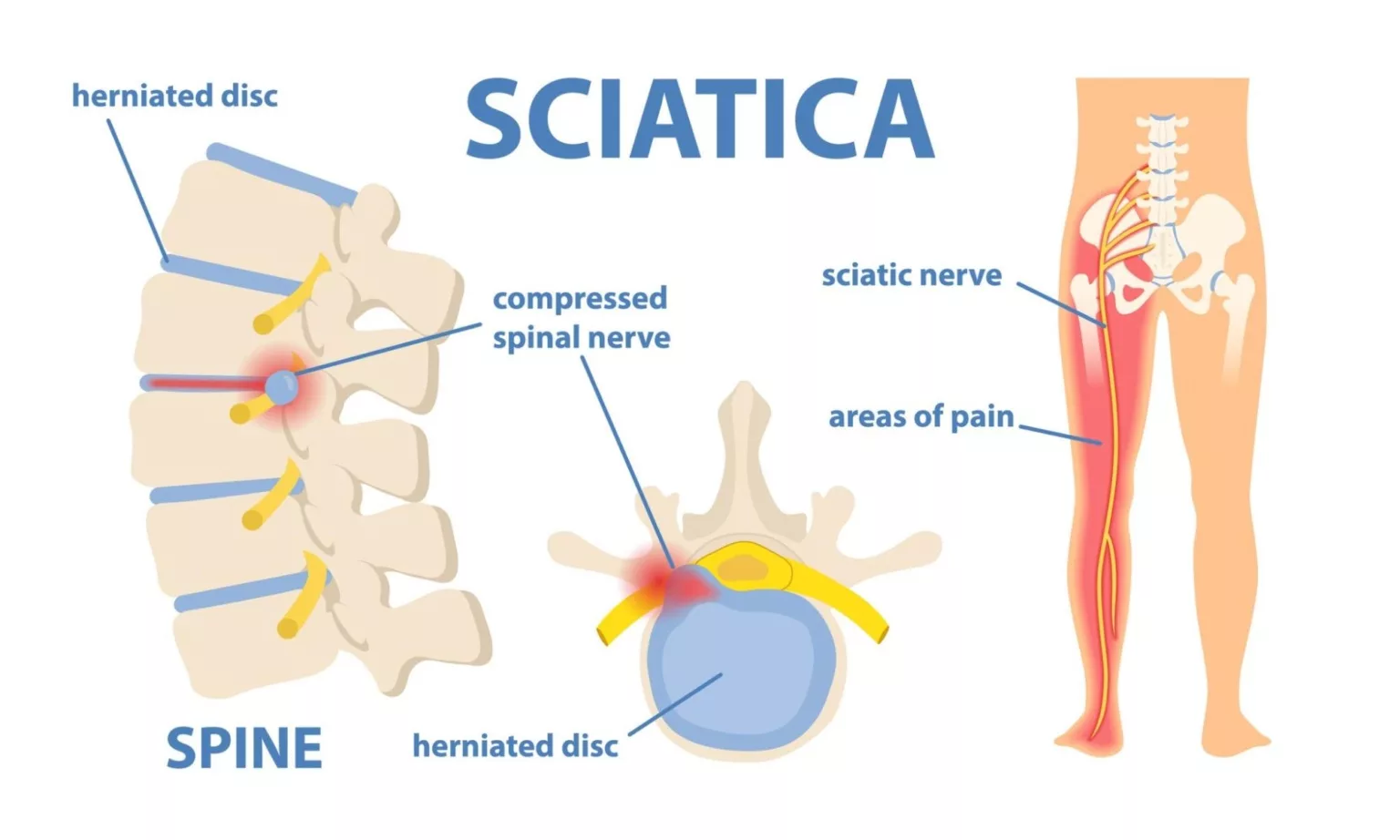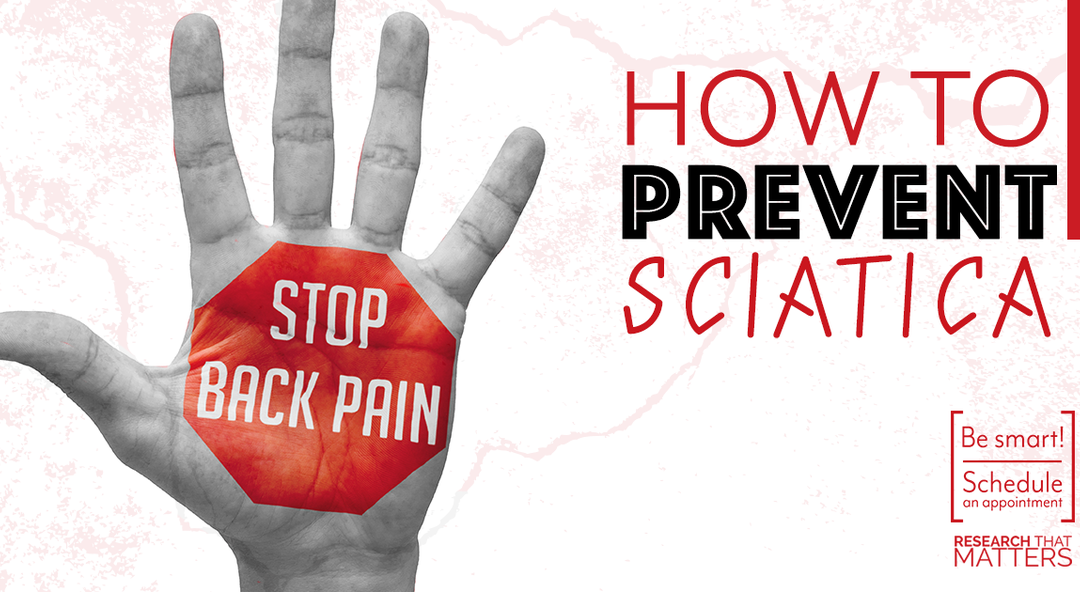Sciatica Solutions: Your Ultimate Guide to Preventing Back Pain
Back pain and sciatica can be debilitating conditions that affect millions of people worldwide. Whether you’re dealing with occasional discomfort or chronic pain, taking proactive measures to prevent back pain and sciatica is crucial for maintaining a healthy spine. In this blog post, we’ll explore the top ten tips to help you prevent back pain and sciatica, allowing you to enjoy a life free from the constraints of spinal discomfort.
Back Pain Causes

Back pain is a prevalent condition that can result from a variety of causes, ranging from mechanical issues to underlying health conditions. Understanding the potential triggers for back pain is crucial for effective diagnosis and treatment. Here are some common causes of back pain:
- Muscle Strain: Overexertion, improper lifting, or sudden movements can lead to muscle strains, causing localized back pain.
- Spinal Disc Issues: Herniated or bulging discs can put pressure on nerves, resulting in back pain.
- Arthritis: Conditions like osteoarthritis or rheumatoid arthritis can affect the joints in the spine, leading to pain.
- Scoliosis: An abnormal curvature of the spine can cause chronic back pain.
- Osteoporosis: Weakening of the bones can make them more susceptible to fractures, contributing to back pain.
Sciatica Causes

Sciatica is a condition characterized by pain that radiates along the path of the sciatic nerve, which branches from your lower back through your hips and buttocks and down each leg. On top of that, sciatica is often caused by compression or irritation of the sciatic nerve. Here are common causes of sciatica:
- Herniated Discs: Compression of the sciatic nerve due to a herniated disc is a common cause of sciatica.
- Spinal Stenosis: Narrowing of the spinal canal can exert pressure on the sciatic nerve.
- Piriformis Syndrome: Compression or irritation of the sciatic nerve by the piriformis muscle in the buttocks.
- Spondylolisthesis: Slippage of one vertebra over another can lead to nerve compression.
Top 10 Tips to Prevent Back Pain and Sciatica

Preventing back pain and sciatica involves adopting healthy habits and lifestyle changes that support the well-being of your spine. Here are the top ten tips to help prevent back pain and sciatica:
Maintain a Healthy Posture
The foundation of a healthy spine begins with good posture. Poor posture can contribute to back pain and sciatica by placing excess strain on the spine and its supporting structures. Whether sitting at a desk, standing, or walking, it’s essential to maintain a neutral spine position. Sit with your back straight, shoulders relaxed, and feet flat on the ground. When standing, distribute your weight evenly on both feet, and avoid slouching or leaning to one side. Practicing good posture habits consistently can significantly reduce the risk of developing back pain and sciatica.
Exercise Regularly
Regular exercise is key to maintaining a strong and flexible spine. Engaging in activities that promote core strength helps support the lower back and prevents muscle imbalances. Incorporate exercises such as planks, bridges, and abdominal crunches into your routine to strengthen the core muscles. Additionally, activities like swimming, walking, and yoga can enhance overall flexibility and improve posture, reducing the likelihood of developing back pain and sciatica.
Lift Properly
Improper lifting techniques are a common cause of back injuries leading to pain and sciatica. Whether lifting heavy objects at work or performing household tasks, it’s crucial to use proper lifting mechanics. Bend your knees, keep the object close to your body, and engage your core muscles when lifting. Avoid twisting your spine while carrying heavy loads, as this can strain the muscles and lead to injury. By practicing safe lifting techniques, you can protect your spine and reduce the risk of developing back pain.
Invest in Ergonomic Furniture and Accessories
Creating a workspace that promotes good posture is essential for preventing back pain, especially for those who spend long hours at a desk. Invest in ergonomic furniture, such as an adjustable chair and a desk at the correct height, to support a neutral spine position. Additionally, consider using accessories like lumbar cushions or ergonomic keyboards to enhance comfort and reduce strain on the spine. Making these adjustments can have a significant impact on preventing back pain and sciatica associated with prolonged sitting.
Manage Stress and Practice Relaxation Techniques
Stress can contribute to muscle tension and exacerbate back pain and sciatica. Incorporating stress management techniques into your daily routine can help mitigate its impact on your spine. Practice relaxation techniques such as deep breathing, meditation, or yoga to reduce overall stress levels. Adequate sleep is also crucial for allowing the body to recover and repair, promoting spinal health. By managing stress and prioritizing relaxation, you can contribute to the prevention of back pain and sciatica.
Maintain a Healthy Weight
Excess body weight places additional stress on the spine and can contribute to the development of back pain and sciatica. Maintaining a healthy weight through a balanced diet and regular exercise is essential for spinal health. Focus on a diet rich in nutrients, including calcium and vitamin D, which are crucial for bone health. By adopting a healthy lifestyle that includes proper nutrition and regular physical activity, you can reduce the risk of obesity-related back problems.
Stay Hydrated and Promote Joint Health
Hydration plays a crucial role in maintaining the health of spinal discs, which act as shock absorbers between the vertebrae. Drinking an adequate amount of water helps keep the discs hydrated and supports overall joint health. Additionally, incorporating foods rich in omega-3 fatty acids, such as fish and flaxseeds, can help reduce inflammation in the joints and promote spinal health. By staying hydrated and consuming a diet that supports joint health, you can contribute to preventing back pain and sciatica.
Avoid Prolonged Sitting
In today’s sedentary lifestyle, many people spend extended periods sitting, whether at a desk, in front of a computer, or during long commutes. Prolonged sitting can lead to muscle stiffness, poor circulation, and increased pressure on the spinal discs. To prevent back pain and sciatica, it’s crucial to take breaks and incorporate movement into your day. Stand up, stretch, and walk around at regular intervals to reduce the impact of prolonged sitting on your spine. Consider using a standing desk to alternate between sitting and standing throughout the workday.
Listen to Your Body and Seek Prompt Treatment
Ignoring early signs of back pain or sciatica can lead to more severe issues down the road. Listen to your body and pay attention to any discomfort or pain you may experience. If you notice persistent symptoms, seek prompt medical attention. Early intervention can prevent the progression of spinal conditions and improve the effectiveness of treatment. A healthcare professional can provide a thorough evaluation, offer personalized advice, and recommend appropriate interventions, such as physical therapy, chiropractic care, or other medical treatments.
Incorporate Stretching and Flexibility Exercises
Maintaining flexibility in the muscles and joints is crucial for preventing back pain and sciatica. Incorporate stretching exercises into your routine to promote flexibility and reduce muscle tightness. Focus on stretches that target the muscles of the lower back, hips, and hamstrings, as these areas are commonly associated with back pain and sciatica. Yoga and Pilates are excellent choices for improving flexibility and promoting spinal health. By incorporating regular stretching exercises, you can enhance your range of motion, reduce muscle tension, and contribute to the prevention of back pain.
Conclusion: Back Pain and Sciatica

Preventing back pain and sciatica requires a multifaceted approach that encompasses lifestyle choices, daily habits, and proactive measures to support spinal health. By maintaining good posture, engaging in regular exercise, practicing safe lifting techniques, and addressing factors such as stress and weight management, you can significantly reduce the risk of developing back pain and sciatica. Investing in ergonomic solutions, staying hydrated, avoiding prolonged sitting, and listening to your body are essential components of a comprehensive strategy for spinal health. Incorporating these top ten tips into your daily life can contribute to a strong, flexible, and pain-free spine, allowing you to lead an active and fulfilling life.
CALL NOW +1-407-434-7246
If you have suffered any type of injury or have been experiencing pain that just won’t go away regardless of what you do, then all you have to do is call and speak with our friendly staff. Find Best Sciatica Chiropractor in Orlando, Florida. Our team can help you get the treatment you need and ensure that the pain you experience is alleviated – once and for all.
We are proud to serve the areas of Orlando, Altamonte Springs, Haines City, Plant City, Kissimmee, Winter Haven, and Ocala.
Contact us for Chiropractor near me in Orlando, Florida for an Appointment Today.
How do I know if my back pain is sciatica?
The telltale sign of sciatica is pain that starts in your lower back and shoots down one leg, sometimes all the way into your foot.
Does walking help sciatica?
Medical professionals generally advise people to resume physical activities, including walking, as soon as possible. Walking may help reduce pain, inflammation, and disability in people with sciatica. A doctor may refer a person to a physical therapist for support and guidance on exercising with sciatica.
How do you sleep with sciatica?
It's more comfortable to lie on the pain-free side with the sciatic side on the top. The knees should be bent with a pillow placed between them to support the spine and pelvis. If there is a gap between the waist and the mattress, place a small pillow there. A pillow may be needed for arm support as well.
What is the main cause of sciatica?
The sciatic nerve travels from the lower back through the hips and buttocks and down each leg. Sciatica most often occurs when a herniated disk or an overgrowth of bone puts pressure on part of the nerve. This causes inflammation, pain and often some numbness in the affected leg.
Why is sciatica worse at night?
Lying down increases the amount of pressure being placed on your sciatic nerve. This pressure can intensify if you have a soft mattress that causes your spine to bend while you sleep. Other symptoms of sciatica may also prevent you from getting a good night's sleep.



